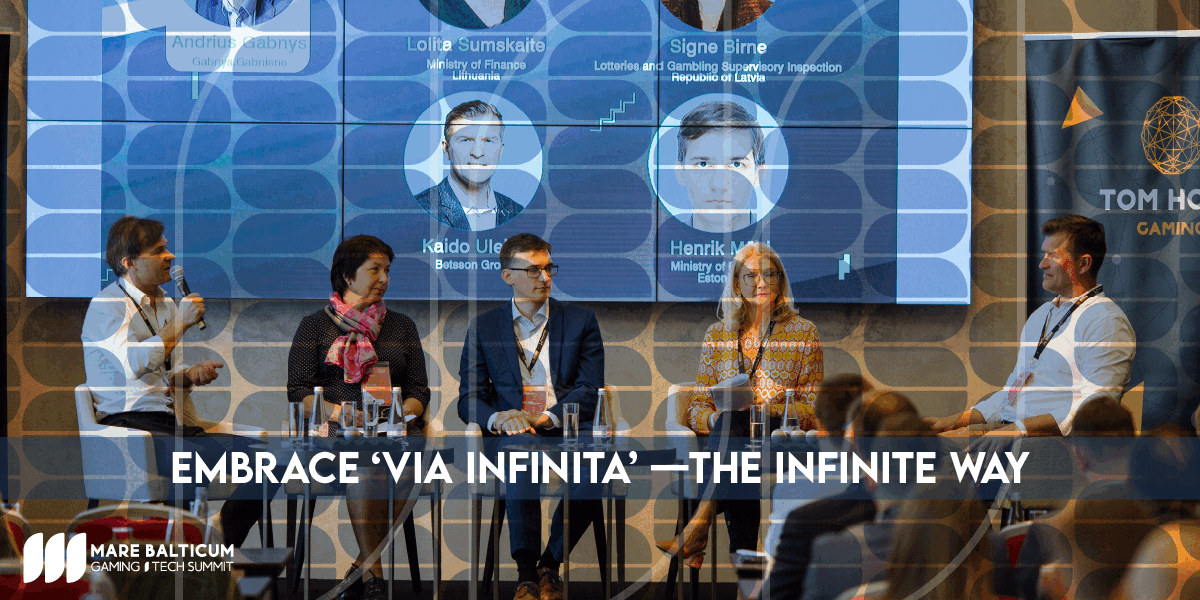Blockchain
Hut 8 Reports Third Quarter 2020 Financial Results
Toronto, Ontario–(Newsfile Corp. – November 12, 2020) – Hut 8 Mining Corp. (TSX: HUT) (OTCQX: HUTMF) (“Hut 8” or “the Company“), a publicly listed bitcoin mining company, today announces its financial results for the third quarter ending September 30, 2020 (“Q3-2020”). Hut 8 reports all amounts in Canadian Dollars unless otherwise stated.
Q3-2020 Highlights
- Quarterly revenue of $5.8 million with mining profit margin of -37%.
- Revaluation gain related to Hut 8’s bitcoin holdings of $5.6 million for the quarter with a bitcoin price at quarter end of US$10,788.
- Net loss of $0.9 million and negative adjusted EBITDA of $2.9 million.
- Renegotiated key terms with lender to provide more downward flexibility with bitcoin collateral and save Hut 8 nearly $500,000 per year in interest expense.
- Hosting revenue of $0.5 million from Hut 8’s first hosting client with 6MW of latest generation bitcoin mining equipment.
- Transferred the management of site operations from Bitfury to Hut 8, providing savings of over $1.5 million per year.
- Made a bitcoin equipment order for 275 PH/s of which 154 PH/s using 6.7MW was installed this quarter with the remainder expected to be installed by the end of 2020.
- Hut 8 became the first company to enter and exit the TSX Sandbox successfully, which solidifies its place as a TSX issuer.
Selected Financial Information
| Three months ended September 30, | Nine months ended September 30, | |||||||||||
| 2020 | 2019 | 2020 | 2019 | |||||||||
| Revenue | $ | 5,754,732 | $ | 26,749,874 | $ | 27,724,292 | $ | 67,132,276 | ||||
| Site operating costs | (7,871,231 | ) | (11,353,029 | ) | (29,120,406 | ) | (34,372,623 | |||||
| Mining profit | (2,116,499 | ) | 15,396,845 | (1,396,114 | ) | 32,759,653 | ||||||
| Mining profit margin | -37% | 58% | -5% | 49% | ||||||||
| Depreciation | (3,545,173 | ) | (8,178,269 | ) | (17,512,599 | ) | (24,534,807 | |||||
| Gross profit | $ | (5,661,672 | ) | $ | 7,218,576 | $ | (18,908,713 | ) | $ | 8,224,846 | ||
| Gross profit margin | -98% | 27% | -68% | 12% | ||||||||
| Expenses | (787,965 | ) | (707,270 | ) | (2,694,002 | ) | (2,090,574 | |||||
| Share-based compensation | (167,743 | ) | (670,136 | ) | 479,892 | (2,427,144 | ||||||
| Gain on use of digital assets | 198,369 | 514,135 | 1,800,984 | 5,433,530 | ||||||||
| Revaluation of digital assets | 5,577,854 | (10,050,642 | ) | 13,713,962 | 8,243,089 | |||||||
| Net operating income (loss) | (841,157 | ) | (3,695,337 | ) | (5,607,877 | ) | 17,383,747 | |||||
| Net finance expense | (567,787 | ) | (1,122,930 | ) | (1,909,354 | ) | (3,512,166 | |||||
| Foreign exchange gain (loss) | 508,606 | (370,374 | ) | (772,714 | ) | 703,347 | ||||||
| Gain on share issuance | – | – | – | 951,059 | ||||||||
| Net income (loss) | $ | (900,338 | ) | $ | (5,188,641 | ) | $ | (8,289,945 | ) | $ | 15,525,987 | |
| Adjusted EBITDA | $ | (2,904,464 | ) | $ | 14,689,575 | $ | (3,548,032 | ) | $ | 30,669,079 | ||
| Adjusted EBITDA margin | -50% | 55% | -13% | 46% | ||||||||
| Net income (loss) per share – basic and diluted |
$ | (0.01 | ) | $ | (0.07 | ) | $ | (0.09 | ) | $ | 0.20 | |
Q3-2020 Overview
Q3-2020 was the first full quarter after the bitcoin halving where bitcoin production was cut in half while the network hash rate continued to rise, making it one of the most difficult periods for bitcoin miners to operate. To put this into context, it became 140% more difficult to mine for a bitcoin from just before the halving in May 2020 to September 30, 2020, while the bitcoin price increased by 9% in that same period. The economics of mining bitcoin have significantly improved subsequent to Q3-2020.
Hut 8 also recognized $0.5 million of hosting revenue after signing up its first client with 6MW of latest generation bitcoin mining equipment. This is a new revenue stream for Hut 8 and provides consistent recurring revenue with its available electrical capacity and existing infrastructure.
Hut 8 has continued to find ways to reduce costs in Q3-2020 through many successful initiatives in the quarter. In July 2020, the Company re-negotiated its credit facility terms with Genesis Global Capital, LLC (“Genesis) and successfully reduced the interest rate from 9.85% to 8.00% per annum saving approximately $500,000 per year.
Another initiative during Q3-2020 was that Hut 8 transferred the Clarke chips from its Drumheller facility to Medicine Hat which brought together Hut 8’s higher efficiency chips with its best electricity pricing at Medicine Hat. Also, Hut 8 completed the transfer of the management of operations of both the Medicine Hat and Drumheller facilities from Bitfury to Hut 8, providing for savings of over $1.5 million per year. With full control over the sites, Hut 8 will continue to streamline operations while maintaining the highest industry standards.
Hut 8’s strategy of mining and holding bitcoin continued to pay off as there was a $5.6 million gain on the re-measurement of bitcoin holdings in Q3-2020. Additionally, by only strategically selling bitcoin at higher prices, Hut 8 recorded a $0.2 million gain on the use of digital assets. Overall, for Q3-2020, Hut 8 recorded a net loss of approximately $0.9 million and a negative Adjusted EBITDA of $2.9 million.
More than halfway through the quarter, Hut 8 completed the installation of 1,000 M31S and 1,000 M31S+ mining equipment at its Medicine Hat facility. The equipment collectively increased Hut 8’s mining power by approximately 154 PH/s using 6.7 MW of power. The remainder of the equipment purchase, which consists of 1,590 M30S units is expected to be shipped late November 2020 and will provide an additional 140 PH/s using approximately 5.3MW.
Hut 8 also achieved a milestone when they became the first company to successfully exit the TSX Sandbox which solidifies Hut 8 as a TSX listed issuer. Hut 8 was also the first issuer to be listed to the TSX via the TSX Sandbox and has been trading on the senior TSX exchange since early October 2019.
This release should be read in conjunction with the Company’s unaudited condensed consolidated interim financial statements and corresponding MD&A for the three and nine months ended September 30, 2020 filed on SEDAR and posted on the Company’s website.
ABOUT HUT 8 MINING CORP.
Hut 8 is a bitcoin mining company with industrial scale operations in Canada. Hut 8 creates value for investors through low production costs and appreciation of its bitcoin inventory. The company provides investors with direct exposure to bitcoin, without the technical complexity or constraints of purchasing the underlying cryptocurrency. Investors avoid the need to create online wallets, wire money offshore, and safely store their bitcoin.
The Company’s common shares are listed under the symbol “HUT” on the TSX and as “HUTMF” on the OTCQX Exchange.
Key investment highlights and FAQ’s: https://www.hut8mining.com/investors.
Keep up-to-date on Hut 8 events and developments and join our online communities at Twitter, Instagram and LinkedIn.
Hut 8 Corporate Contact:
Jimmy Vaiopoulos
Interim Chief Executive Officer
Tel: (647) 256-1992
Email: [email protected]
Non-GAAP Measures
This press release presents certain non-GAAP (“GAAP” refers to Generally Accepted Accounting Principles) financial measures to assist readers in understanding the Company’s performance. These non-GAAP measures do not have any standardized meaning and therefore are unlikely to be comparable to similar measures presented by other issuers and should not be considered in isolation or as a substitute for measures of performance prepared in accordance with GAAP. Management uses these non-GAAP measures to supplement the analysis and evaluation of operating performance.
The following terms are used, which are not found in the Chartered Professional Accountants of Canada Handbook and do not have a standardized meaning under GAAP.
EBITDA (Earnings before Interest, Taxes, Depreciation, and Amortization)
- “EBITDA” represents net income or loss excluding net finance income or expense, income tax or recovery, depreciation, and amortization.
- “Adjusted EBITDA” represents EBITDA adjusted to exclude share-based compensation, fair value loss or gain on revaluation of digital assets, write-offs, and costs associated with one-time transactions (such as listing fees).
- “Adjusted EBITDA Margin” represents Adjusted EBITDA as a percentage of revenue.
EBITDA is used to show ongoing profitability without the impact of non-cash accounting policies, capital structure, and taxation. This provides a consistent comparable metric for profitability.
“Mining Profit” represents gross profit (revenue less cost of revenue), excluding depreciation. “Mining Profit Margin” represents Mining Profit as a percentage of revenue. Mining Profit and Mining Profit Margin show the cash expenses against the revenue without the impact of non-cash accounting policies such as depreciation.
FORWARD-LOOKING STATEMENTS
Certain information in this press release constitutes forward-looking information. In some cases, but not necessarily in all cases, forward-looking information can be identified by the use of forward-looking terminology, such as “plans”, “targets”, “expects” or “does not expect”, “is expected”, “estimates”, “intends”, “assumes”, “anticipates” or “does not anticipate” or “believes”, or variations of such words and phrases, or state that certain actions, events or results “may”, “could”, “would”, “might”, “will” or “will be taken”, “occur” or “be achieved”. In addition, any statements that refer to expectations, projections or other characterizations of future events or circumstances contain forward-looking information. Statements containing forward-looking information are not historical facts, but instead represent management’s expectations, estimates and projections regarding future events.
Forward-looking information is necessarily based on a number of opinions, assumptions and estimates that, while considered reasonable by Hut 8 as of the date of this press release, are subject to known and unknown risks, uncertainties, assumptions and other factors that may cause the actual results, level of activity, performance or achievements to be materially different from those expressed or implied by such forward-looking information, including but not limited to the factors described in greater detail in the “Risk Factors” section of the Filing Statement dated March 1, 2018 relating to the Qualifying Transaction of Oriana Resources Corporation and Hut 8, which is available at www.sedar.com. These factors are not intended to represent a complete list of the factors that could affect Hut 8; however, these factors should be considered carefully. There can be no assurance that such estimates and assumptions will prove to be correct. The forward-looking statements contained in this press release are made as of the date of this press release, and Hut 8 expressly disclaims any obligation to update or alter statements containing any forward-looking information, or the factors or assumptions underlying them, whether as a result of new information, future events or otherwise, except as required by law.
Neither the TSX nor its Regulation Services Provider (as that term is defined in the policies of the TSX) accepts responsibility for the adequacy or accuracy of this release.
Blockchain
Supply Chain Finance Market Forecast to Reach $9.4 Billion by 2029: Increasing Emphasis on Sustainable Sourcing
Global Supply Chain Finance Market
Blockchain
Web3 Startups Raise Nearly $1.9B in Q1 2024 Despite Overall Downtrend in Crypto VC Interest

Venture capital funding for cryptocurrency and blockchain projects has seen a notable resurgence in the first quarter of 2024, marking its first quarterly rise since 2021. Crunchbase data released today indicates that Web3 startups secured nearly $1.9 billion in funding across 346 deals during this period. This represents a substantial 58% increase from the previous quarter, offering a glimmer of hope amidst the ongoing downward trend in overall crypto VC interest.
The recent surge in funding can be attributed to investors adopting a more long-term perspective on Web3, as opposed to the hype-driven “tourist investors” predominant in recent years. Chris Metinko, the author of the report, notes that investors are shifting their focus to the AI sector, indicating a change in investment strategy. There is a growing interest in supporting the foundational infrastructure of the decentralized internet, rather than solely concentrating on crypto wallets and lending platforms, which attracted significant investments during the peak period of 2021 to 2022.
While large funding rounds were relatively uncommon in Q1, several notable investments stood out. Exohood Labs, a company integrating AI, quantum computing, and blockchain, secured a remarkable $112 million seed round at a valuation of $1.4 billion. EigenLabs, an Ether token “restaking” platform, raised $100 million in a Series B round led by a16z crypto. Additionally, Freechat, a decentralized social network leveraging blockchain technology, secured $80 million in a Series A round. These investments, among others, contributed to the increase in valuations and the emergence of four new Web3 unicorns in Q1.
Despite the recent progress, the future trajectory of Web3 remains uncertain. Metinko suggests that the next few quarters will be pivotal in determining the industry’s direction. While investors anticipate a rebound in investment as the decentralized internet evolves, it may take another year for venture capital activity to stabilize after the exuberance of 2021. Factors such as the approval of U.S. spot Bitcoin exchange-traded funds and the upcoming Bitcoin halving could also influence the market, given the rising prices of Bitcoin and Ether.
A noteworthy example of significant funding in the Web3 space is Monad Labs’ recent successful funding round, which secured $225 million led by Paradigm. Monad Labs is a layer-1 blockchain compatible with Ethereum, offering faster transaction processing. This funding round harkens back to the golden era of crypto funding in 2021-2022, when L1 solutions attracted substantial investments.
Earlier this year, Balance, a digital asset custodian based in Canada, announced that it had once again reached $2 billion in assets under custody (AUC) amidst the recent market recovery. Similarly, Korea Digital Asset (KODA), the largest institutional crypto custody service in South Korea, has experienced remarkable growth in crypto assets under its custody, expanding by nearly 248% in the second half of 2023.
Analysts at Bernstein Research project that crypto funds could reach an impressive $500 billion to $650 billion within the next five years, representing a significant leap from the current valuation of approximately $50 billion. This forecast underscores the growing optimism and potential for substantial growth within the crypto industry in the coming years.
Source: cryptonews.com
The post Web3 Startups Raise Nearly $1.9B in Q1 2024 Despite Overall Downtrend in Crypto VC Interest appeared first on HIPTHER Alerts.
Blockchain
ASIC cracks down on blockchain mining firms

Three blockchain mining companies – NGS Crypto, NGS Digital, and NGS Group – along with their directors, Brett Mendham, Ryan Brown, and Mark Ten Caten, are facing legal action from the Australian Securities and Investments Commission (ASIC) for allegedly operating without a license, in violation of Australia’s Corporations Act. ASIC initiated legal proceedings against these entities on April 9, citing concerns about their non-compliance with financial regulations and their solicitation of Australian investors.
According to ASIC, the NGS companies promoted blockchain mining packages with fixed-rate returns to Australian investors, encouraging the transfer of funds from regulated superannuation funds to self-managed superannuation funds (SMSFs) for conversion into cryptocurrency. Approximately 450 Australians invested a total of around USD 41 million in these packages, raising concerns about potential financial losses.
The legal action filed by ASIC alleges that the companies violated section 911A of the Corporations Act, which prohibits companies from providing financial services without a valid Australian Financial Services Licence (AFSL). ASIC is seeking interim and final court orders to prohibit the NGS companies from offering financial services in Australia without an AFSL.
ASIC Chair Joe Longo emphasized the importance of investors carefully considering the risks before investing in crypto-related products through their SMSFs. Longo stated that ASIC’s actions send a message to the crypto industry about the regulator’s commitment to ensuring compliance with regulations and protecting consumers.
In a separate development, the Federal Court appointed receivers for the digital currency assets associated with the NGS companies and their directors to safeguard these assets amid concerns about the risk of dissipation. Mendham was also issued a travel restriction order, preventing him from leaving Australia.
While a court date for the proceedings has not been set, ASIC’s investigation is ongoing, with the regulator continuing to gather evidence and build its case. It is worth noting that the investigated companies share a similar name with NGS Super, a legitimate Australian pensions provider, leading to potential confusion among investors. NGS Super clarified that it is not involved in selling cryptocurrency or related products and has taken legal action to protect its trademark and members’ interests.
Source: iclg.com
The post ASIC cracks down on blockchain mining firms appeared first on HIPTHER Alerts.
-
Blockchain4 days ago
Open-Source Intelligence (OSINT) Market is expected to reach a revenue of USD 64.9 Bn by 2033, at 25.6% CAGR: Dimension Market Research
-

 Blockchain4 days ago
Blockchain4 days agoBlockchain Transforming Travel: Quantum Temple’s Innovative Venture
-

 Blockchain Press Releases3 days ago
Blockchain Press Releases3 days agoBybit and Franck Muller Partner with Sidus Heroes to Launch Cosmic Gears: A Pioneering Web3 Game with a $250,000 Prize Pool and Exclusive Watch Collection
-

 Blockchain4 days ago
Blockchain4 days agoBybit and World Leaders Forge Major Alliance to Direct Web3 for Social Good
-

 Blockchain2 days ago
Blockchain2 days agoQuantum eMotion Files a Patent for Quantum-based Blockchain Wallet Under the Patent Cooperation Treaty (PCT)
-

 Blockchain2 days ago
Blockchain2 days agoElizabeth Warren Urges Treasury Secretary Yellen to Implement Strong AML/CFT Measures for Stablecoins
-

 Blockchain Press Releases2 days ago
Blockchain Press Releases2 days agoCanaan Shines at Blockchain Life 2024 in Dubai
-

 Blockchain4 days ago
Blockchain4 days agoEvolution of the Blockchain World: Doric Blockchain Drives Education and Adoption of Blockchain Technology and Tokenization in Latin America






































